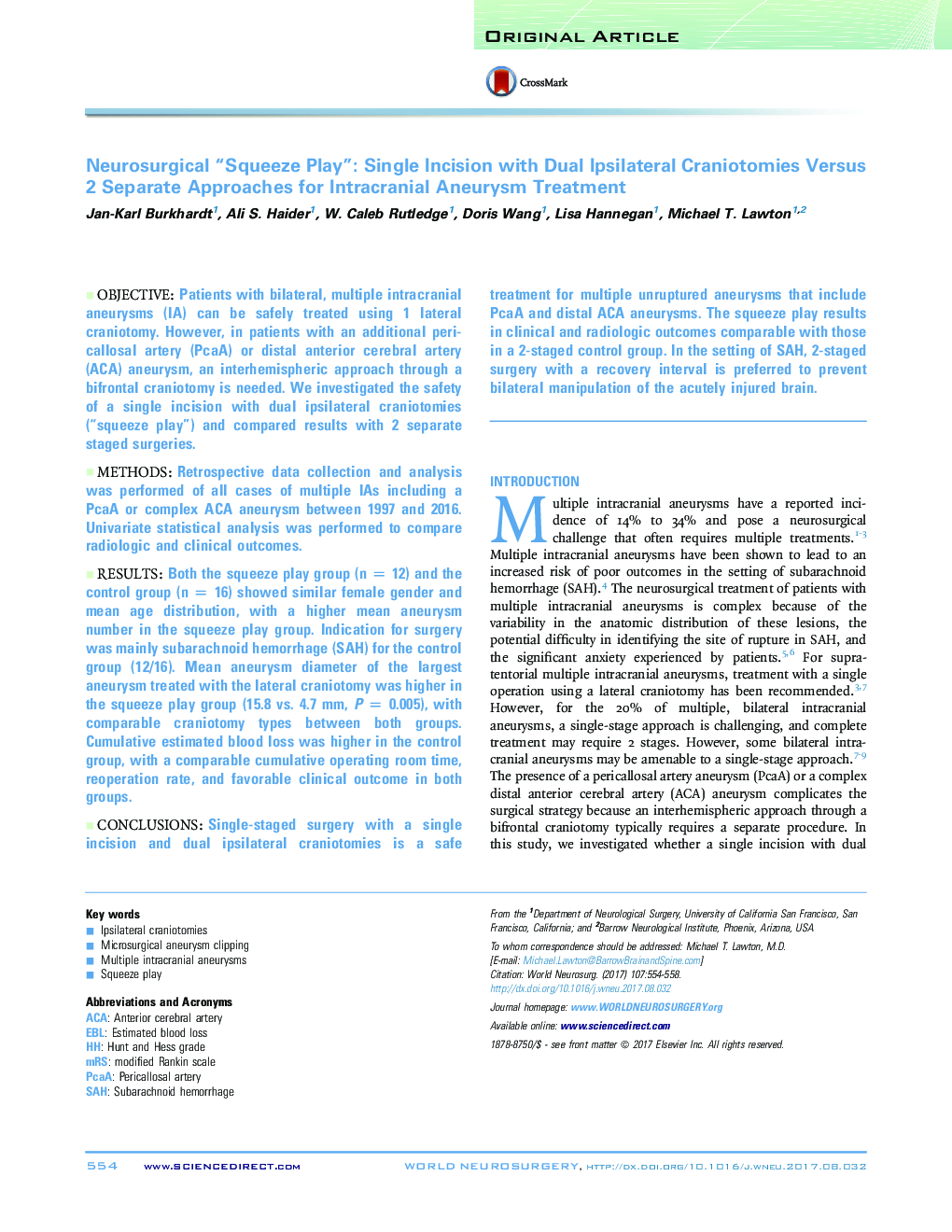| Article ID | Journal | Published Year | Pages | File Type |
|---|---|---|---|---|
| 5633918 | World Neurosurgery | 2017 | 5 Pages |
ObjectivePatients with bilateral, multiple intracranial aneurysms (IA) can be safely treated using 1 lateral craniotomy. However, in patients with an additional pericallosal artery (PcaA) or distal anterior cerebral artery (ACA) aneurysm, an interhemispheric approach through a bifrontal craniotomy is needed. We investigated the safety of a single incision with dual ipsilateral craniotomies (“squeeze play”) and compared results with 2 separate staged surgeries.MethodsRetrospective data collection and analysis was performed of all cases of multiple IAs including a PcaA or complex ACA aneurysm between 1997 and 2016. Univariate statistical analysis was performed to compare radiologic and clinical outcomes.ResultsBoth the squeeze play group (n = 12) and the control group (n = 16) showed similar female gender and mean age distribution, with a higher mean aneurysm number in the squeeze play group. Indication for surgery was mainly subarachnoid hemorrhage (SAH) for the control group (12/16). Mean aneurysm diameter of the largest aneurysm treated with the lateral craniotomy was higher in the squeeze play group (15.8 vs. 4.7 mm, P = 0.005), with comparable craniotomy types between both groups. Cumulative estimated blood loss was higher in the control group, with a comparable cumulative operating room time, reoperation rate, and favorable clinical outcome in both groups.ConclusionsSingle-staged surgery with a single incision and dual ipsilateral craniotomies is a safe treatment for multiple unruptured aneurysms that include PcaA and distal ACA aneurysms. The squeeze play results in clinical and radiologic outcomes comparable with those in a 2-staged control group. In the setting of SAH, 2-staged surgery with a recovery interval is preferred to prevent bilateral manipulation of the acutely injured brain.
